In case you missed it, the next generation of Paper 101 is here. Cougar® Paper Trails is the epitome of form and function, simplifying basic concepts of paper education and pairing them with inspiring insights and gripping print techniques. Rather than provide a long list of vocabulary words or overly wordy explanations, we created a dynamic, tactile piece that visually explains the concepts of basis weight and opacity. Printed by J&J Printing in Lenexa, Kansas on select basis weights ranging from 50 lb. text to 130 lb. cover in both Cougar and Cougar Natural, the techniques you’ll see within Paper Trails demonstrate what a paper like Cougar can handle in relation to the idea of basis weight and opacity. In this blog, you’ll learn how each technique was executed and why it’s important to start with the right sheet.
A Fit for Every Solution
Created using a four-color process—along with three separate spot colors applied via three different passes—this initial book employs an outdoor biking theme for its visuals, guiding its readers to a deeper understanding of how basis weight creates exceptional visual results through those very same illustrations.
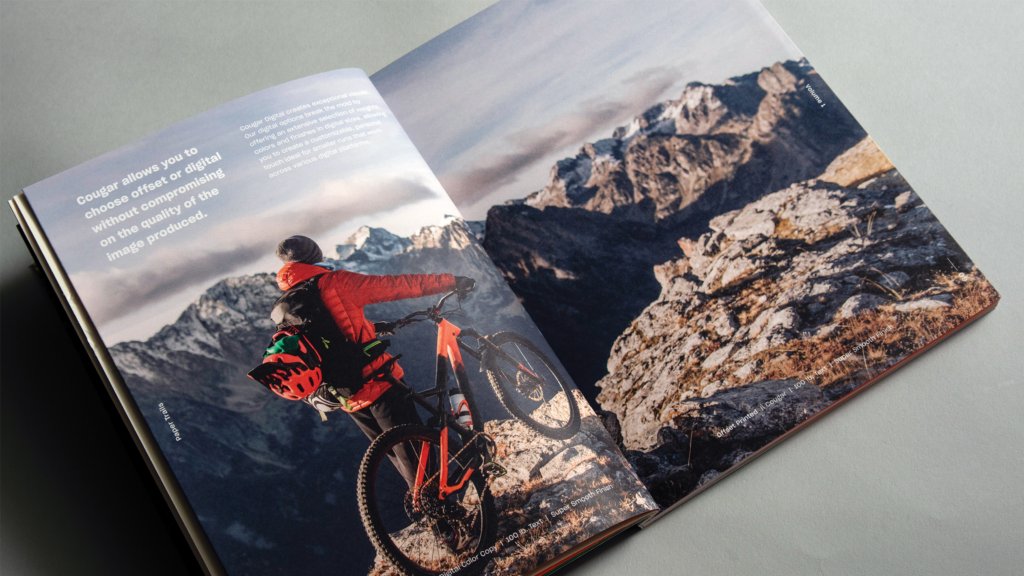
Printed on 100 lb. Cougar Text, Super Smooth Finish
For example, this spread was printed using two different types of technology, showcasing how Cougar gives you the ability to perform on various printing platforms.
The lefthand side was printed digitally on a Canon iX sheetfed inkjet printer, which uses tiny nozzles to eject uniform, microscopic droplets of ink at high speed. More dots of a particular color are applied to create a denser color or a color build. The right of the spread was printed offset using a four-color process, which appears as a rosette pattern made of dots in each of the 4 process colors—cyan, magenta, yellow and black. Dot size varies depending on the color used and even how light or dark the shade is.
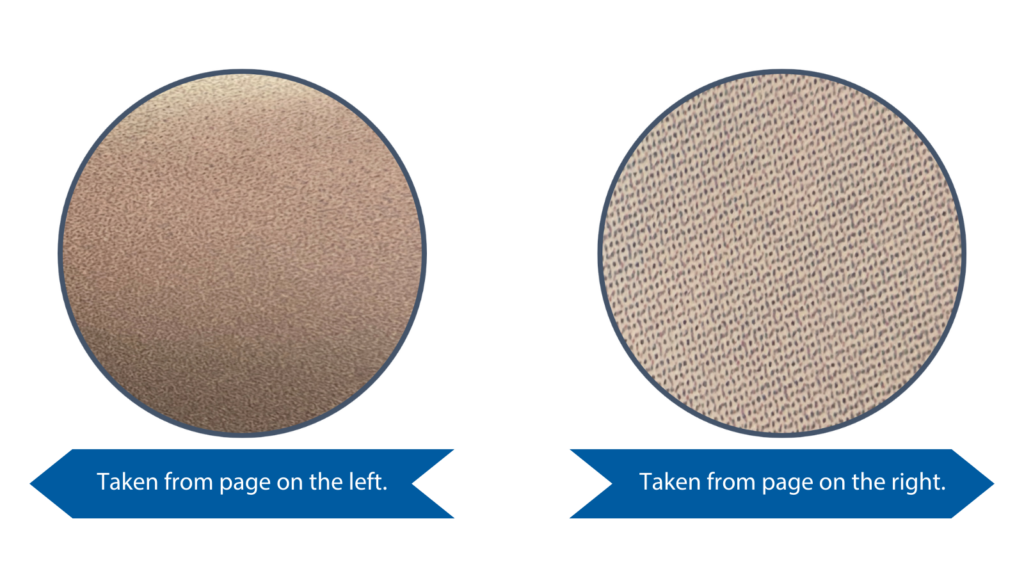
Up close and personal, you’ll see the formation of Cougar ensures uniform dot patterns—regardless of print technology—resulting in consistent image replication, color and quality despite the difference in printing platform. We have a product for any print technology—whether offset, digital or inkjet—and our digital offering includes an extensive selection of weights, finishes and sizes.
Let it Shine
No, this isn’t coated paper. The shine you see on the Side by Side spread below is the result you get when you combine a super smooth paper with a black foil stamp.
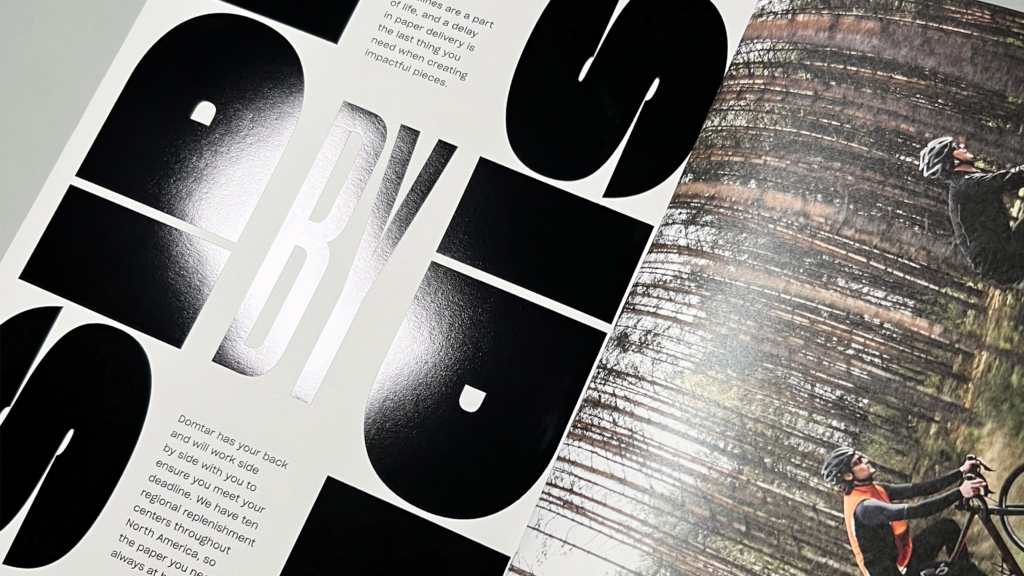
Printed on 100 lb. Cougar Text, Super Smooth Finish
The small type in the spread is one hit of pure black, while the large text is created through “hot foil” or “hot stamping.” When the paper runs through the press, a heated metal die presses your selected design into the top of the foil, freeing it from its backing, attaching it to the paper’s surface and allowing the foil material to provide the color—no ink needed.
Stamp(s) of Approval
Embossing is often referred to as the third dimension in a design. It’s a technique that adds texture by creating shadow and depth, bringing an alluring air to your brochures, letterheads and business cards with or without added color or foil. For Paper Trails, we desired a classy, subtle effect and used a blind emboss in several spreads.
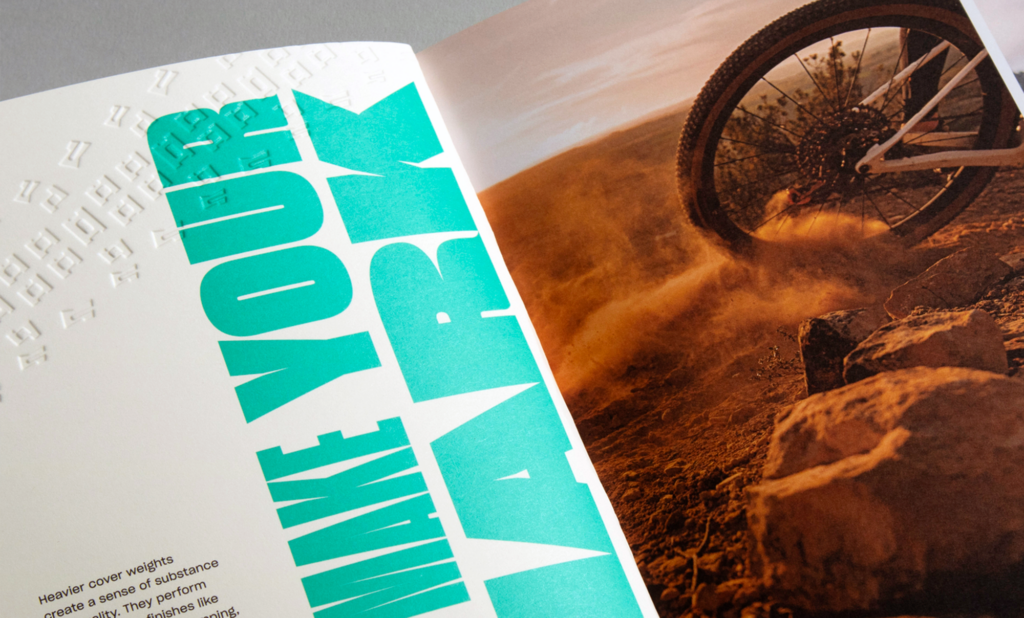
Remember, 40% of our brain is continuously preoccupied with the sense of touch, and more than 50% is devoted to processing sensory experiences at any given time—so simple, tactile techniques help create more memorable interactions for your audience and engage more of their mind in a single touchpoint. Embossing is a technique that works best on heavier weights, however, if you plan to incorporate the technique on lighter-weight papers, you should consider using a French fold (pictured below) to mask the reverse side imprint and ensure that the subsequent pages aren’t impacted.
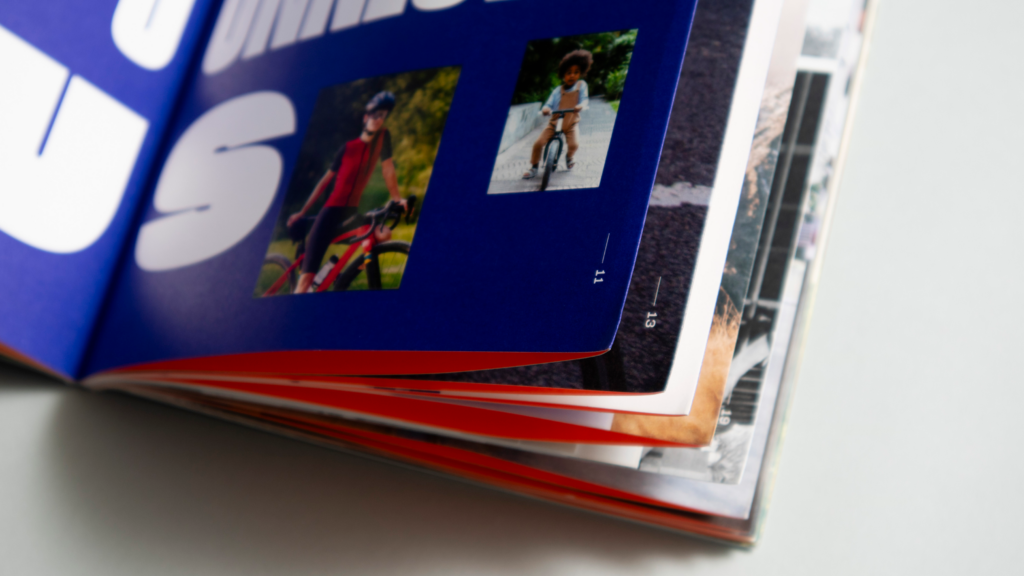
French folding is an easy way to add bulk to brochures and we were able to make this piece pop with a touch of fluorescents. The interior color of the French folds was achieved using PMS 811U on the text weight pages only, adding a nice surprise for readers throughout the book and necessary mass to the pages following the blind emboss.
Finishing Touches
While all print techniques have the potential to elevate your project, there were a few that brought Paper Trails to life.
Contrary to popular belief, you can add a spot UV to an uncoated paper if you utilize a screen coater.
Spot register UV is a technique used to apply a clear, glossy coating to a specific area of a printed page, rather than the complete sheet. It’s an easy way to increase visual interest by highlighting specific elements on a layout. In Paper Trails, we applied the technique to several spreads, including the Size Matters (above) and Paper Connects Us pages, adding a more engaging and luxurious feel to photos and type.
Finally, we brought the concept of opacity to life in the heart of the piece. Opacity is key when printing projects that feature heavy ink coverage—like in Paper Trails—because it prevents the previous page’s image from shining through and distorting the next visual.
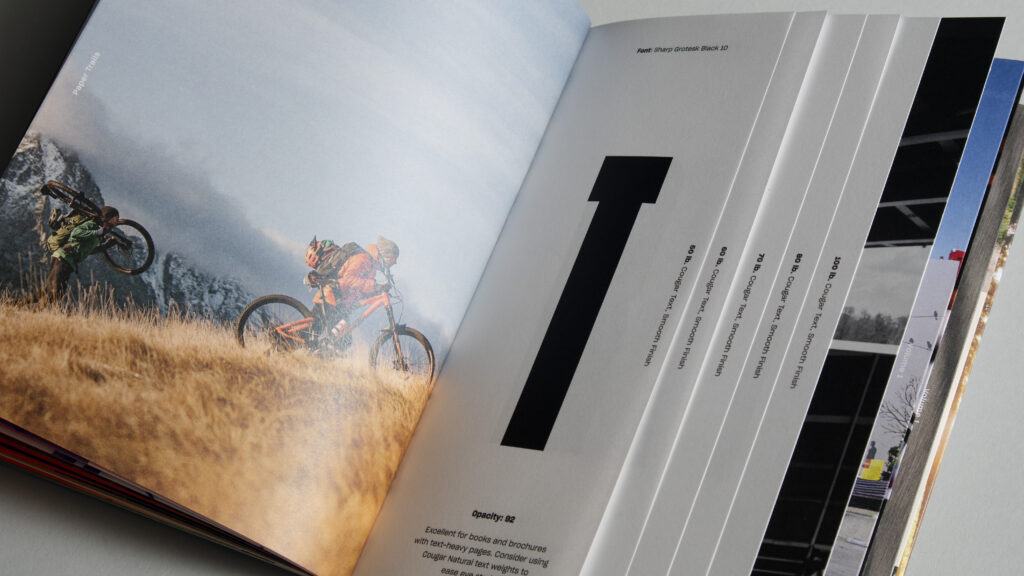
Cougar’s stellar opacity is on full display throughout the book, but the waterfall at its center, featuring 50-100 lb. text, illustrates the concept in real-time. From start to finish, the word TRAIL is spelled on the sample sheets and the final page overlays a full-coverage black and white photo, driving the point home.
Paper Trails is a testament to why Cougar is the best-in-class premium uncoated paper in the market. No matter the technique you choose or the equipment you use, a successful project begins with your paper selection. Request your copy of Paper Trails today.

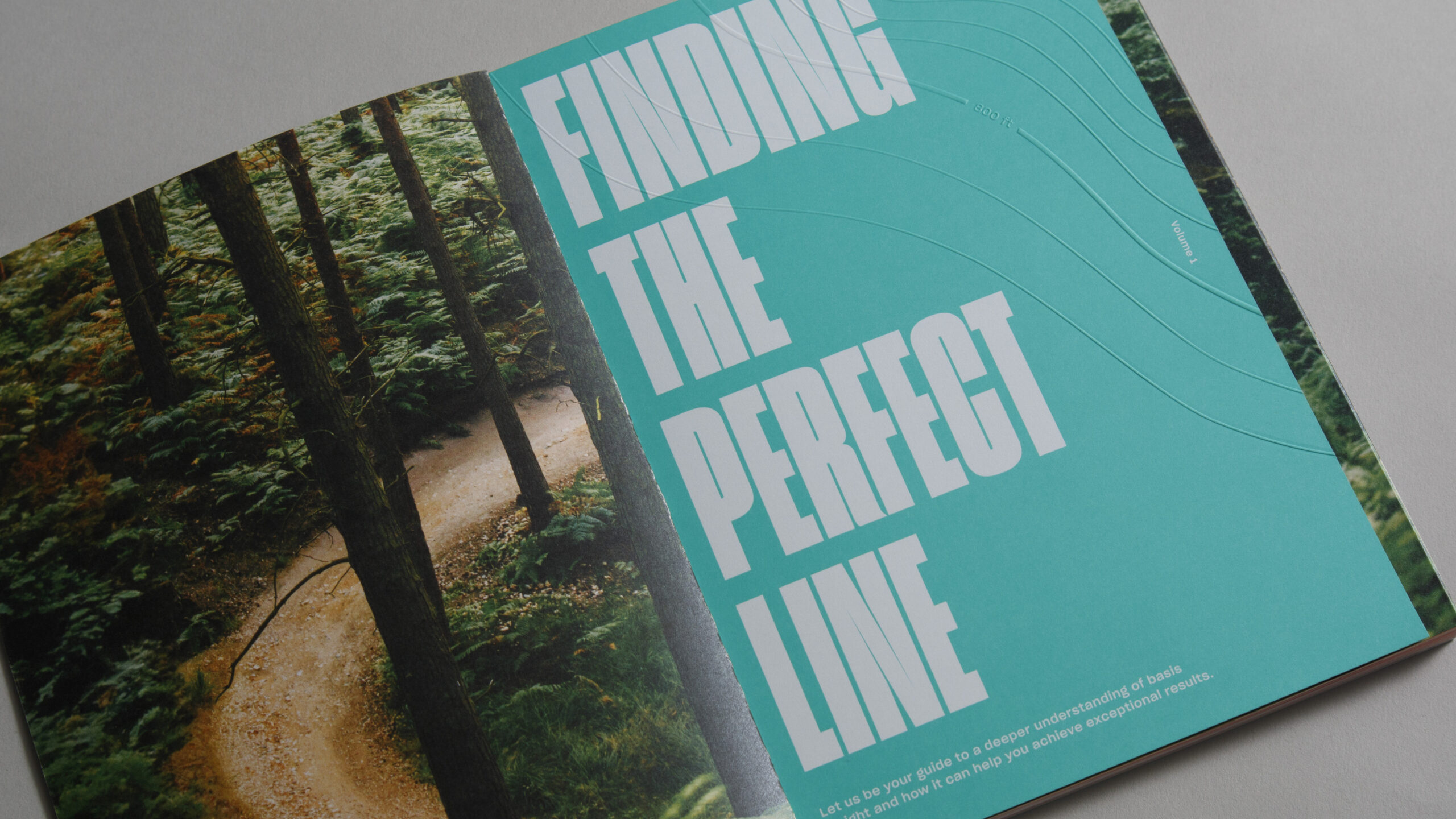


Discussion